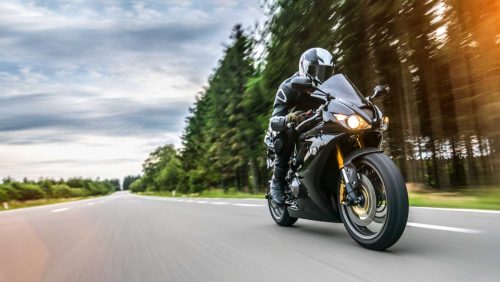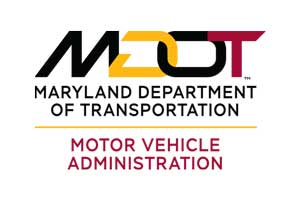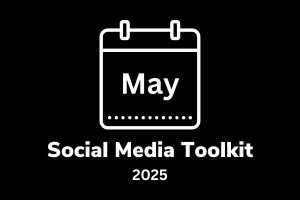Motorcycle Safety
Unlike car and truck drivers, motorcyclists are not surrounded by reinforced steel, making them some of the most vulnerable road users.

Each year in Maryland, nearly 80 motorcycle riders and passengers are killed in traffic crashes and nearly 1,000 riders and passengers are injured. When there is a crash involving a car or truck and a motorcycle, the motorcyclist almost always loses. Because motorcycle riders are not protected by the vehicle like the occupants of a car or truck, motorcyclists are injured in nearly three out of four crashes. Drivers and riders have the responsibility to share the road safely.
MOTORCYCLE SAFETY FACTS:
In Maryland, crashes that involved motorcyclists result in injury or death at more than twice the rate of all injury or fatal crashes occurring across the State. See all crash data.
-
73
The average number of motorcyclist fatalities
Motorcycle operators aged 21-34 were the most represented age group in motorcycle-involved crashes. This age group accounted for 34% of all motorcycle crashes, injuries and fatalities over the past five years (one out of 3 motorcycle operators).
-
1,315
The average number of crashes involving a motorcycle.
Motorcycle-involved crashes are more prevalent in April through October, with June, July, August, and September being the peak months for motorcycle crashes.
Share the Road with Motorcyclists
Warmer weather marks the beginning of the riding season for motorcyclists, which can present challenges to other drivers on the road. Nearly 61 percent of motorcycle-involved crashes occur between 2 p.m. and 9 p.m. and over half (55 percent) occur Friday through Sunday.
Motorists are responsible for looking out for motorcycle riders, as they would for other cars and trucks.
Tips for Sharing the Road
For Drivers:
Motorcyclists can use the full lane so give them space and don’t cut them off.
When there is a crash involving a car and a motorcycle, the car driver is at fault more than half of the time. Always check two or more times before merging, changing lanes, and pulling into traffic.
Drivers tend to look for other cars and trucks, not motorcyclists. And, because a rider and their motorcycle are smaller than a car, they are often difficult to see.
A Motorcyclist's Responsibilities
Motorcyclists can help keep themselves safe by wearing the proper gear, obtaining their license, participating in training, and gaining experience with riding in controlled environments.
Everyone deserves respect.
Choose riding gear that increases your visibility in traffic in addition to providing protection in the event of a crash. Use bright colors and retro-reflective strips or decals, especially at night.
There is no one safe place to ride. Use lane positioning to be seen by drivers. Ride with your headlight on and consider using a modulating headlight.
Allow space for braking or for avoiding a crash.
Motorcycle safety training courses have much to offer new, experienced, and returning riders. Keep your skills sharp by regularly participating in a motorcycle skills training course.
Wearing properly-fitting motorcycle-specific protective clothing can prevent serious injury in a crash. Over the ankle boots, gloves, a protective jacket and pants and a properly-fitted helmet with a face shield or protective eyewear are all part of the full gear package. Choose riding gear that increases your visibility in traffic in addition to providing protection in the event of a crash. Use bright colors and retro-reflective strips or decals, especially at night.
Training Available
Maryland Highway Safety Office and MDOT MVA offer a variety of motorcycle training courses for riders of all experience levels. Other institutions also offering training.
MD MOTORS
Maryland MOTORS (Motor Officers Teaching Other Riders Safety) is a course offered by MHSO, Maryland State Police, and local law enforcement agencies. The course provides skills assessments for motorcyclists with the goal of providing education for all motorcyclists to keep everyone safe on Maryland roads.
Entry-Level Basic Rider Course
This course is designed for the true novice rider who has little or no riding experience.
Basic Rider Course 2 – License Waiver (BRC2u-LW)
This course is intended for the rider who owns a motorcycle, or has access to one, has the current on-street experience, and needs to get licensed.
The Three-Wheel Basic Rider Course (3WBRC)
This course is designed for the novice rider who has little or no riding experience specifically for 3-wheel motorcycles.
Basic Rider Course 2 – Skills Practice (BRC2-SP)
The Basic Rider Course 2 – SP is for the licensed rider who wants to improve or refresh their skills, or who has recently completed the Basic Rider Course and wants additional practice on their personal motorcycle. Individuals enrolling in this course must have a valid Class M motorcycle license.
The Advanced Rider Course (ARC)
The Advanced Rider Course (ARC) is the civilian version of the Motorcycle Safety Foundation military sport bike course but it can be taken on any stock street-legal motorcycle. It is a course designed for experienced riders.




